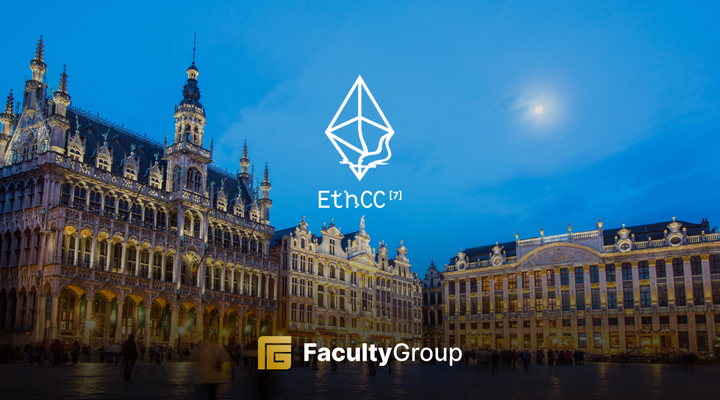Uniswap’s L2 Pivot

Ethereum has been by far the most active ecosystem in the digital asset space and in DeFi, Uniswap’s dominance as the automated market maker (AMM) of choice has remained unchallenged thus far. The famed orderbook-free decentralised exchange was launched in November 2018 and has been the lead DeFI DEX ever since. Then came Uniswap v2 which was deployed in May 2020 offering direct ERC20/ERC20 pairs, hardened price oracles, flash swaps, modular smart contracts, and other improvements.
UniSwap has facilitated billions in trading volume since its inception and the quest for perfection continues with Uniswap v3 launched on L2s this year and most recently with the announcement of its deployment on ZkSync Era. Uniswap Foundation-backed front-end partner Oku integrates with ZkSync Era, to offer advanced features for trading such as order books and charting for Uniswap v3. UniSwap is eating the L2 world, network by network. Let’s look at their L2 pivot and what it means for Ethereum.
Uniswap’s v3 iteration pioneered “concentrated liquidity”, which significantly improved the capital efficiency for DEXs when launched in May 2021. Other improvements included range limit orders for multiple price ranges, increased trade execution and decreased fees through rollups. Currently, the TVL for Uniswap v3 is $1.969 billion. The chart below shows TVL and volume on Uniswap over the last year.
Uniswap v3: 24hr Trading Volume:~$639.13 million (across all networks)
Source: DeFi Llama
Breaking down Uniswap’s TVL by network: Arbitrum $207.42m, Polygon $66.25m, Optimism $38.15m, Base $8.6m and zkSync ERA with $562k being last to market. Uniswap’s v3 is designed to run on L2s and the migration of trading volume has followed its move to L2 networks.
Uniswap v3 code was launched under a Business Source License, protecting its code against unauthorised commercialization for two years. This BUSL expired earlier this year so now v3 code can be forked by other developers without penalties in theory. So others, similar to PancakeSwap who forked v2, may now take advantage of this open-source opportunity and build another competitor on v3.
Ethereum Inflation, anyone?
The consequences of this move to L2s and zk rollups has had a noticeable effect on Ethereum trading volumes over the last year. Our friends at The Block have great Ethereum On-Chain Metrics.
Ethereum’s fee-burning mechanism has meant that the higher the gas prices are, the more ETH that is “burned” by the network (which removes it permanently from circulation).
Ethereum gas fees have dropped to remarkably low levels—an average network transaction currently costs 7 gwei, or just $0.24 in USD. The transition to PoS was supposed to drive gas prices down but it seems to be having the same effect on the value of ETH (as transaction volume continues to move to L2 networks). As a result, ETH supply has grown by $47m over the last 30 days. This growth has largely been driven by a corresponding lack of transaction activity on the Ethereum network.
Last year’s Merge was heralded as establishing ETH as “ultrasound money”. This reduced ETH issuance by 90%; many Ethereum evangelists were convinced the change would clinch ETH’s status as a deflationary currency that would only appreciate in value. Now things aren’t looking so certain.
The uptick in ETH in circulation is a result of there being fewer NFT trades, much less DeFi activity and the transition to L2 'zk rollups’ networks by DeFi protocols such as UniSwap, Aave, Compound, etc.
The question is what will we do with all this blockspace we have created at the settlement layer? Coincidentally, the Ethereum staking queue is now empty. Less trading volume equals less revenue from fees for Ethereum Stakers. Whether this is a market blip or an unintended consequence of the creation of L2s, only time will tell.
FAQs:
1. How does Uniswap's pivot to Layer 2 networks impact the overall user experience, especially in terms of transaction speed and costs?
Uniswap's pivot to Layer 2 networks (L2s) is a significant move aimed at enhancing scalability and efficiency, directly impacting the user experience in a couple of key ways. Transaction speed and costs are at the forefront of this impact. L2 solutions, such as zkSync Era, which Uniswap has integrated with, are designed to offload transactions from the Ethereum mainnet, allowing for faster processing times and lower fees. This is because L2 networks can process transactions more efficiently and at a lower cost, by batching them before finalizing on the mainnet. As a result, users can expect a smoother and more cost-effective trading experience on Uniswap, with quicker transaction confirmations and reduced gas fees, making DeFi more accessible and practical for a wider audience.
- Are there any security concerns associated with moving to Layer 2 solutions like zkSync Era, and how is Uniswap addressing them?
Security concerns are paramount when it comes to blockchain technology and financial applications. The shift to L2 solutions brings about questions regarding the security models of these networks. L2s like zkSync Era employ cryptographic techniques such as zero-knowledge proofs to ensure security and privacy, without compromising the decentralized nature of the blockchain. However, the security guarantees of L2 solutions depend on their specific architecture and the robustness of their implementation. Uniswap, in deciding to pivot to L2 networks, would have conducted thorough due diligence to ensure these platforms meet high security standards. Nevertheless, the nuances of how Uniswap addresses security concerns specifically in the context of zkSync Era, including any additional measures or protocols implemented, remain crucial for users to understand the risk profile of their transactions.
- How does the introduction of order books and charting in Uniswap v3 on zkSync Era differ from its previous versions, and what benefits do these features bring to traders?
The introduction of order books and charting in Uniswap v3 on zkSync Era represents a significant evolution in its offering, providing users with more sophisticated trading tools. Traditionally, Uniswap operated as an automated market maker (AMM), which relies on liquidity pools and algorithms to determine prices. The move to incorporate order books and charting tools suggests a hybrid approach, blending the AMM model with features typical of traditional exchanges. This development could offer traders better price discovery mechanisms, more control over their trades, and enhanced analytical capabilities to make informed decisions. The benefits include potentially tighter spreads, more liquidity, and the ability to execute complex trading strategies that were previously difficult to implement on AMM platforms. However, the article does not delve into the specifics of how these features are implemented or their exact benefits, leaving room for further exploration of how Uniswap v3's capabilities compare to both its previous iterations and other trading platforms in the DeFi space.








